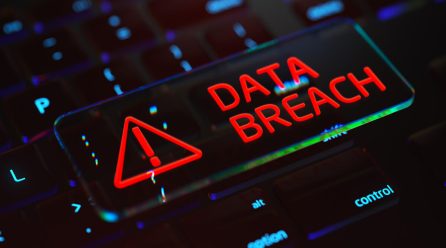We aim to acknowledge the invaluable contributions of compliance officers worldwide—those diligent guardians of corporate integrity who dedicate their careers to enhancing compliance capabilities, a critical yet frequently overlooked objective by their peers.
The complex process of empowering an organisation to function in a legally sound and ethical manner while meeting its business goals is laced with pressure and littered with obstacles. From scanning the dynamic regulatory environment and managing multiple stakeholders to the threat of financial penalties and reputational damage, these compliance champions carry a heavy burden – and must not be taken for granted.
Celebrating Innovation with Essential Technology Capabilities
Each year, hardworking compliance professionals receive the recognition they deserve when we celebrate National Compliance Officer Day. To acknowledge their role and hard work, we wanted to share the details of 10 clever technology capabilities every compliance officer should be using.
As compliance departments evolve and grow so do the technology capabilities that support compliance professionals in their day-to-day lives. Whether you have an integrated GRC solution in place or are still using manual processes like spreadsheets and emails to manage compliance, there is always some new functionality available to make the lives of compliance professionals that little bit easier. Take a tour through the latest technology capabilities available when you adopt a best-practice integrated GRC solution to manage compliance and see which ones could benefit your organisation.
Digital Obligations Library
The first step on the path to compliance is knowing what rules and regulations to follow. By collating this information, compliance officers can plan and execute their proactive strategy for adhering to them. But with the sheer number of regulations, policies, and regulations many businesses must comply with – long gone are the days when managing this process using spreadsheets was sufficient.
Efficient compliance teams employ the latest GRC software tools to house their vast obligations libraries. GRC software embeds a comprehensive obligations library into a business’s core operating function, enabling employees to understand how to operate to remain compliant. These purpose-built obligations libraries enable organisations to capture in depth data about each of their obligations – including information on the requirements, definitions, exceptions, and applicability of regulations.
The Strategic Advantage of a Digital Obligations Library
This digital log of regulatory & legislative requirements allows compliance officers to perform a range of vital tasks expeditiously including: addressing areas of non-compliance, prioritising tasks by considering the risk of non-compliance, assigning accountability & ownership, tracking progress, and analysing results. By linking the obligations library to workflows, this functionality also allows compliance officers to manage the impact if a rule or regulation changes – by flagging compliance failures and potential exposure.
Furthermore, intuitive dashboards enable them to identify and understand their regulatory compliance obligations quickly and cost-effectively, they can be categorised into separate modules for ease of access – such as anti-money laundering, cybersecurity and GDPR.
Regulatory Horizon Scanning & Change Management Workflows
Regulatory compliance is a dynamic process amid ever-changing frameworks, guidelines, and best practices. Unless they have a crystal ball, compliance officers can’t predict what’s on the horizon from a regulatory perspective. To negotiate this unpredictable landscape successfully, they must instil resilience and agility by deploying proactive regulatory change management practices that incorporate regulatory horizon scanning.
Software-enabled regulatory horizon scanning allows enterprises to link their GRC tool to their preferred regulatory content provider and receive notifications of upcoming changes that feed straight into their compliance process. Each compliance requirement is mapped to associated business processes. Therefore, when a notification of an upcoming change is received, stakeholders can easily digest rule amendments or new additions, determine their impact on the organisation’s existing obligations, update the necessary controls, policies & procedures, and ensure changes are socialised and implemented.
Automatic workflows instigate a step-by-step change process, automatically logging the completion of each stage of the implementation of a change, compiling a complete audit trail for regulators. Automatic notifications alert stakeholders of missed deadlines and upcoming changes, ensuring the business is always up to date with regulatory requirements.
Using a best-practice regulatory change management solution with regulatory horizon scanning allows a business to automatically identify and assess changes before notifying stakeholders, providing the foresight required to consistently meet regulatory obligations.
Ready to Simplify Compliance? Discover how our GRC software can transform your processes. Request Your Personalized Demo today!
Automated Policy Management Tools
Policies provide the foundations by which a business operates. Without a comprehensive set of policies, businesses open themselves up to a world of ambiguity and unforeseen costs and even fines and penalties. Large businesses have thousands of policies & operating procedures – spanning key functions like HR, IT, sales, and operations – that are often applicable company wide. To ensure efficient policy creation, sign off, circulation and attestations, businesses are turning to centralised policy management tools to automate the process.
Policy management software can be harnessed to maintain policy lifecycle management across development, maintenance, communication, and attestation. Policies are created in a consistent format using predefined templates. As they are entered into the system the policy owner will complete key fields concerning who the policy applies to, who is the owner, who needs to sign it off, and when it should be revised – creating a clear policy inventory.
Once a policy is created it can be pushed through an approval workflow to obtain signoff and when the policy is live you can obtain attestations from applicable staff who must agree to the policy. This automated process provides a robust audit trail and content management capability to ensure policies are current and communicated. Compliance officers can easily assess the management of ongoing policies, identify areas that require improvement, and action worthwhile change expeditiously.
Automated Workflows to Manage Compliance Requirements
Operating procedures instil the policies and processes needed for an organisation to complete tasks in accordance with key regulatory requirements & standards, such as SOX, GDPR, ISO, and PCI DSS. Failure to adhere to these standards exposes organisations to a range of damaging consequences: fines, reputational damage, loss of staff, downtime, and reduced productivity.
GRC software supports compliance officers by providing structured processes that create operating standards for staff that meet the requirements of each regulation. The software facilitates purpose-built workflows with step-by-step processes that align with the requirements of each applicable regulation and standard.
Compliance Assurance: Leveraging Centralized Systems for Proactive Management and Visibility
These pre-configured capabilities and structured processes make it simple for staff to stay abreast of compliance requirements – as the system flags missed deadlines, due dates and unactioned tasks to the relevant stake holder. Managers will also have visibility of any risks of non-compliance enabling them to address on-going problems. This ensures that on the rare occasion an issue arises, an organisation can prove that it has done all it can to remain compliant and clearly pinpoint where problems occur. This makes it easy for firms to demonstrate compliance to auditors & regulators using the real-time dashboards & reports within the tool.
Specialist Tools to Manage Audits & Inspections
Audits & inspections are a vital way to provide assurance to the business that guidelines are being followed – and operations are on track. It is down to the compliance officer to provide the necessary proof that standards are high enough to pass audits & inspections by ensuring all findings are logged and tracked – a requirement that is often hampered by clunky manual processes such as spreadsheets and emails.
Using a GRC software solution to automate the audit & inspection process adds structure and ensures any failures and cautionary actions are dealt with in a timely manner. Software enables organisations to establish a central audit register that enriches data accuracy and accessibility.
Enhancing Compliance Capabilities with Centralized Audit Systems
Using a purpose-built solution drives individual accountability for audit requirements and ensures ownership for any corrective actions required. All audit findings are captured centrally making it easy for businesses to understand inherent problems – to ensure future audits go smoothly. Many audit systems enable you to link audit findings with risk management meaning audit can be linked to any related risks, and recommendations can be linked and synchronised with risk treatment actions.
Using a centralised system makes it easy to set up and replicate recurring audits & inspections and run holistic reports to see how the company is performing.
Empower Your Compliance Strategy with Cutting-Edge Technology. Click here to See It in Action and request your demo!
Automated Governance & Online Attestations
Corporate governance establishes the internal procedures, rules, and controls an organisation implements to; govern itself, make informed decisions, comply with the law, operate in accordance with its stated values, and meet the needs of external stakeholders. Inefficient governance programmes deprive an organisation of this vital structure amid disconnected disciplines, isolated tools, and siloed data.
The Foundation of Good Governance
Mature organisations use GRC software solutions to improve governance. Many solutions come with best practice workflows to ensure a business operates in line with mandatory requirements like GDPR, ISO standards, SOX, and other financial requirements. Using these structured processes facilitated by the tool, organisations can easily remain compliant with a host of regulations and provide proof to auditors and regulators.
Information & clear direction forms the backbone of good governance. Structured operating procedures and high-quality data is essential to ensure good governance. Software facilitates a business to add structure to any process by providing templates to ensure fields are not missed, and drop-down menus to ensure consistent formatting of data. Step-by-step workflows ensure no steps are missed in any process, and all signoffs & approvals are obtained within the solution. Everything is date and time stamped, providing a complete audit trail for regulators.
A Synergistic Approach to Governance and Compliance Strategies
A software solution that gathers and analyses data that feeds into a robust governance framework creates a single source of truth for compliance officers that produces actionable information in the format of dashboards, audit trails, and reports.
This unified approach enables businesses to align their governance framework with the overall business strategy, to ensure all teams are working towards the same goals – and the benefits are compelling: improves relationships between the management, board, shareholders, and other stakeholders; provides the structure through which the objectives of the company are set; and determines the means of attaining those objectives and monitoring performance.
Automated Workflows & Alerts
Using workflow automation to replace manual processes makes the flow of tasks, documents and information across work-related activities perform in accordance with defined business rules. By automating the management of the activities needed to complete a task, GRC processes are optimised by assigning tasks, monitoring questionnaires & assessment surveys, sending requests & follow-ups, and tracking progress against goals – all in a few simple clicks.
Automated workflows are typically used by compliance officers to implement structured signoff & approval processes, implement remediating actions, manage regulatory change, monitor gifts & hospitality, and to log and resolve incidents. For example, internal controls can be set with automated workflows and alerts to notify stakeholders about things like missed deadlines, anomalies in data, and budget overspend, allowing action and intervention to be taken expeditiously.
Real-Time Dashboards & Reports
It’s time for compliance officers to be allowed to abandon spreadsheets, emails, and shared documents & folders – and embrace innovation. GRC software offers integrated dashboards brimming with intuitive functionality – enabling Compliance Officers to easily understand, their current obligations & compliance status. They can drill down into areas of non-compliance, missed deadlines and overdue actions to instigate remediating actions quickly. This single-pane-of-glass view underpins a holistic approach to GRC that can grow and evolve with an organisation and engage stakeholders.
The software’s power to simplify the compliance monitoring and review process ensures information is managed and reported upon centrally, with dashboards designed to highlight areas of management interest. Automated reporting functionality can be used to streamline internal reporting requirements from the senior level eliminating laborious admin tasks.
Unlock the Potential of Proactive Compliance. Book Your Demo Session now and take the first step towards streamlined GRC management!
Best-Practice Incident Management
All organisations are exposed to potential incidents of varying degrees of severity – from major incidents such as cyber-attacks and system downtime to minor incidents such as slips & trips.
Reactive, manual incident management processes lead to near misses and seemingly minor incidents falling through the cracks, engendering a blinkered view of safety performance and workplace risk. If reported and managed effectively however, these potentially damaging events present opportunities to build the foundations of prevention. This has led to organisations seeking out best-practice incident management tools to streamline the process and get the most out of their incident data.
Streamlining Incident Management with GRC Software
GRC software embeds the four core elements of effective incident management into an organisation: identification, response, remediation, and analysis. This structure empowers employees of all levels to log incidents consistently and upload supporting images and evidence. Most solutions offer near miss reporting enabling teams to learn from mistakes and prevent them from reoccurring.
For those incidents that do happen, a best-practice solution will enable teams to conduct investigations using root cause analysis – and manage incidents through to resolution. Cases can be reported from multiple sources and aligned to business processes, controls, risks, policies, and regulations to identify potential trigger events and enabling businesses to significantly reduce the number of incidents.
Automated Risk Management
Risk assessments measure and prioritise risks so risk levels are managed within defined tolerance thresholds and organisations are prepared to respond to them appropriately. Manual processes lack the agility to flag risks early and resolve them quickly.
This has left compliance officers & risk professionals looking for automated tools to structure their risk management process. GRC tools offer best practice risk assessment templates that can be circulated using automated workflows – engaging the entire business in the risk management process.
Navigating Compliance and Risk Through Leveraging GRC Software for Business Agility
The digital risk register available within GRC software enables all potential risks to be logged and tracked consistently and offers the functionality to define KPI’s and risk tolerances, to monitor the likelihood of risk. Modern solutions enable API integrations with other systems & data sources, enabling a business to use live data to detect potential risks using automated control monitoring. This functionality can detect anomalies in large data sets, flag missed deadlines or approvals, or notify when you are nearing your KPI’s or risk tolerances – giving stakeholders the agility needed to rectify problems quickly.
Using an automated risk management solution enables compliance officers to view risk data through a series of interactive dashboards & reports, enabling them to understand any risks of non-compliance and act on them immediately. They can cut back on monotonous reporting tasks & focus their full attention on improving processes to reduce further risk and increase compliance – which is where they can add real value to an organisation.
Make Compliance a Priority with GRC Software
Compliance officers must have access to the latest technology solutions in order to make their lives easier and enable them to add real value to their organisations. These specialist GRC tools extend the reach of the Compliance Officer, they make the entire organisation responsible for compliance – and give Compliance Officers the oversight they need to drive improvement and create efficiencies.
Compliance Officers should be provided with a platform to do their job properly, and business leaders that recognise this will reap the benefits of a more compliant organisation that avoids any potential fines & penalties. Embracing GRC software breathes new life into the compliance function by streamlining processes and providing a central point of oversight. Automated tools replace manual processes & siloed data for a holistic approach to compliance that the humble compliance officer has been craving for too long.
To find out how the Camms solutions can automate and streamline compliance processes in your organisation, request a demo.





